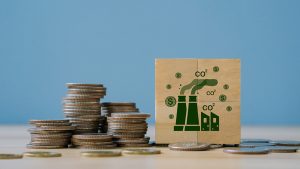Steel and concrete are construction’s two staple materials. Both have reputations for high GHG emission production outputs. In response, the concrete industry has been active in addressing its contribution to global GHGs, delivering some notable and immediate CO2 reduction results using innovations such as carbon capture technology.
However, the steel industry faces the twin challenges of time and capital investment.
Changing steel plants over to more carbon-friendly production methods involves a 10 to 15 year investment cycle, says McKinsey & Company in their report titled, Decarbonization Challenge for Steel. Three of the world’s principal carbon emitters, China, India and the United States, each have significant steel production capacity. However, McKinsey notes these three are not among the 60 countries that have committed to carbon neutrality by 2050.
McKinsey identifies a growing demand for carbon-friendly steel products, increased public interest in sustainability and changing investor sentiment as global drivers for enhanced regulations. That means the steel manufacturing industry may have little choice but to take up the carbon challenge on its own, sooner than later.
The production of steel is responsible for between seven and 10 per cent of the world’s CO2 and GHG emissions, depending which study is referenced. The good news, however, is that according to the McKinsey report, global steel emissions can be traced to a limited number of locations. This makes the industry a good candidate for decarbonization.
There are two primary ways to make steel. One uses a BOF (basic oxygen furnace) into which pure oxygen is blown, converting pig iron into liquid steel. This method is found most often in Europe, says McKinsey. Emission reductions are currently being addressed through efficiency programs targeting the iron content of the raw materials, the increased use of biomass reductants and carbon capture.
The other method of production uses an electric arc furnace, or EAF, to produce liquid steel from scrap. This is far more attractive, particularly when the electricity comes from renewable sources. Also, the use of recycled scrap, referred to as DRIs or direct reduced iron, offers additional environmental benefits.
However, the industry could go much farther. New production processes are being explored that inject hydrogen gas in place of Pulverized Coal Injection (PCI) to improve the performance of conventional blast furnaces.
As explained by the Fuel Cell and Hydrogen Energy Association (FCHEA), “Hydrogen reacts with iron oxide in a similar fashion to carbon monoxide, but instead of producing carbon dioxide, the only by-product is water vapour.”
By using hydrogen and increasing the use of DRIs seven fold, the iron and steel industry could reduce the CO2 emissions by as much as 33 per cent, write Dolf Gielen, Kenneth B. Medlock III and Morgan D. Bazilian in Forbes magazine.
Normally, the production of hydrogen is carbon intensive. However, the FCHEA claims, “When hydrogen used in this process is derived from renewable or decarbonized sources itself, the steel making process can become completely emission-free, creating ‘green steel.’”
The McKinsey report agrees. “Based on the use of green hydrogen as well as renewable electricity from wind, solar, or water, a DRI/EAF setup enables nearly carbon-neutral steel production.”
Although producing green hydrogen clearly has challenges, it’s a very exciting prospect. However, reaching carbon neutrality in steel production would require a manufacturing changeover to EAFs, and in turn a commercially viable supply of renewable electricity for those plants. This represents a challenge in Europe, where McKinsey says the predominant production method is currently the conventional, coal-dependent BF/BOF process.
It’s also a costly venture. Nearly $1 trillion needs to be invested, say Gielen, Medlock and Bazilian. Furthermore, achieving carbon-neutral steel production on a global basis requires serious forward planning.
“Future availability of cheap energy from renewables and regulation will be the two key drivers for the adoption of hydrogen-based steel,” says McKinsey. “It is crucial to act now: industrial sites have lifetimes exceeding 50 years and investment planning horizons of 10 to 15 years.”
John Bleasby is a Coldwater, Ont.-based freelance writer. Send comments and Inside Innovation column ideas to editor@dailycommercialnews.com.











Recent Comments
comments for this post are closed